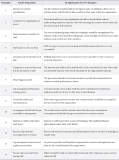ISSN : 2287-9099
Vol.3 No.2

Abstract
Since the advent of Linked Data (LD) as a method for building webs of data, there have been many attempts to apply and implement LD in various settings. Efforts have been made to convert bibliographic data in libraries into Linked Data, thereby generating Library Linked Data (LLD). However, when memory institutions have tried to link their data with external sources based on principles suggested by Tim Berners-Lee, identifying appropriate vocabularies for use in describing their bibliographic data has proved challenging. The objective of this paper is to discuss the potential role of Linked Open Vocabularies (LOV) in providing better access to various open datasets and facilitating effective linking. The paper will also examine the ways in which memory institutions can utilize LOV to enhance the quality of LLD and LLD-based ontology design.

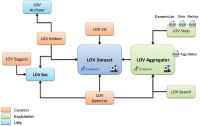






Abstract
The term megajournal is used to describe publication platforms, like PLOS ONE, that claim to incorporate peer review processes and web technologies that allow fast review and publishing. These platforms also publish without the constraints of periodic issues and instead publish daily. We conducted a yearlong bibliometric profile of a sample of articles published in the first several months after the launch of PeerJ, a peer reviewed, open access publishing platform in the medical and biological sciences. The profile included a study of author characteristics, peer review characteristics, usage and social metrics, and a citation analysis. We found that about 43% of the articles are collaborated on by authors from different nations. Publication delay averaged 68 days, based on the median. Almost 74% of the articles were coauthored by males and females, but less than a third were first authored by females. Usage and social metrics tended to be high after publication but declined sharply over the course of a year. Citations increased as social metrics declined. Google Scholar and Scopus citation counts were highly correlated after the first year of data collection (Spearman rho = 0.86). An analysis of reference lists indicated that articles tended to include unique journal titles. The purpose of the study is not to generalize to other journals but to chart the origin of PeerJ in order to compare to future analyses of other megajournals, which may play increasingly substantial roles in science communication.






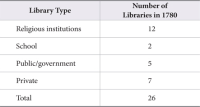
Abstract
The Bavarian town of Regensburg was a library travel destination during the European Enlightenment. With at least 26 collections, the number and variety of its private, governmental, school, and religious libraries rivaled that of much larger cities and figured in the bibliographic travel accounts of Johann Keyssler, Christoph Nicolai, Carl Oelrichs, Filippo Argellati, Georg Zapf, Friedrich Hirsching, Adalbert Blumenschein, and many others. The first-hand descriptions of these repositories are unique primary sources for the study of library history. Having been accessible to researchers largely in published forms, many were designed to serve as bibliographic aids for informing scholars about the locations of specialized subject collections and some individual works. The journals, letters, guidebooks, and texts also reflected the evolving scholarly and scientific nature of their cultural period. Overall, this case study of Regensburg’s libraries illustrates the particular value of contemporary travel literature.


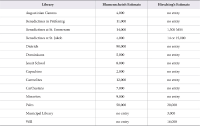

Abstract
Purpose. The present study is an attempt to find out the impact of self-citations on Impact Factor (IF) across disciplines. The study examines the number of research articles published across 27 major subject fields covered by SCImago, encompassing as many as 310 sub-disciplines. The study evaluates aspects like percentage of self-citations across each discipline, leading self-citing countries and continents, and the impact of self-citation on their IF. Scope. The study is global in nature, as it evaluates the trend of self-citation and its impact on IF of all the major subject disciplines of the world, along with countries and continents. IF has been calculated for the year 2012 by analyzing the articles published during the years 2010 and 2011. Methodology/Approach. The study is empirical in nature; as such, statistical and mathematical tools and techniques have been employed to work out the distribution across disciplines. The evaluation has been purely under-taken on the secondary data, retrieved from SCImago Journal and Country Ranking. Findings. Self-citations play a very significant part in inflating IF. All the subject fields under study are influenced by the practice of self-citation, ranging from 33.14% to 52.38%. Compared to the social sciences and the humanities, subject fields falling under the purview of pure and applied sciences have a higher number of self-citations, but a far lesser percentage than the social sciences and humanities. Upon excluding self-citations, a substantial amount of change was observed in the IF of subject fields under study, as 18 (66.66%) out of 27 subjects fields faced shuffle in their rankings. Variation in rankings based on IF with and without self-citation was observed at subject level, country level, and continental level.

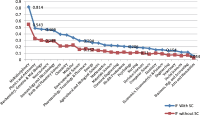
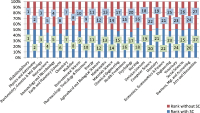

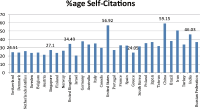

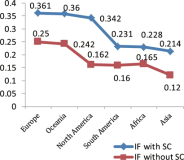


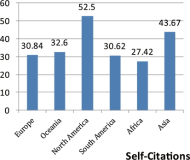


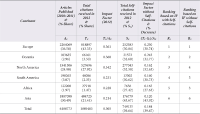
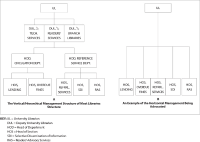
Abstract
This paper focuses generally on the ‘fourteen principles of management’ by Henri Fayol. However, it specifically analyses their application to and implications for libraries and information centres. An extensive review of published works on management generally, and library management in particular, was conducted. This yielded vital insights on the original meaning and later modifications of these principles, as well as their application in the management of various organisations. Consequently, the strengths and weaknesses of these principles were examined to determine their suitability in libraries and information centres. Inferences, illustrations, and examples were drawn from both developed and developing countries which gives the paper a global perspective. Based on available literature, it was concluded that Fayol’s principles of management are as relevant to libraries as they are in other organisations. The paper, therefore, recommends that in addition to modifying some aspects to make these principles more responsive to the peculiar needs of libraries, further research should be undertaken to expand the breadth of these principles and ascertain their impacts on the management of information organisations.

